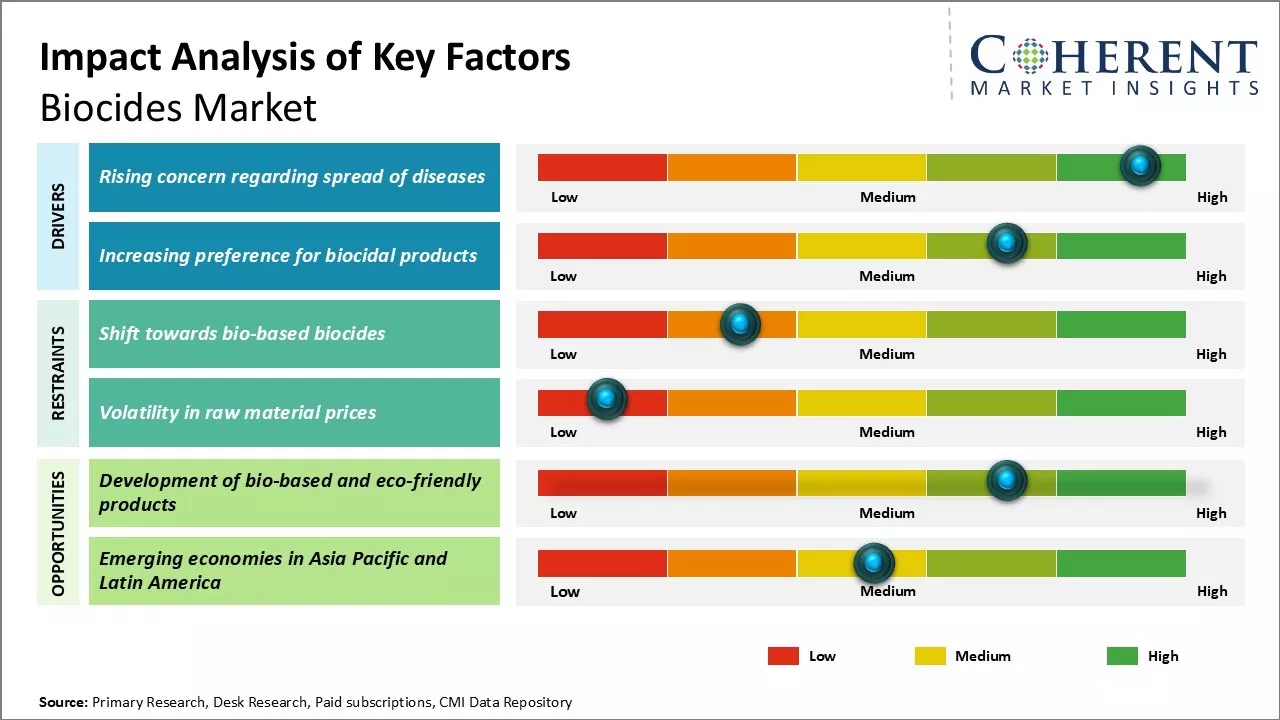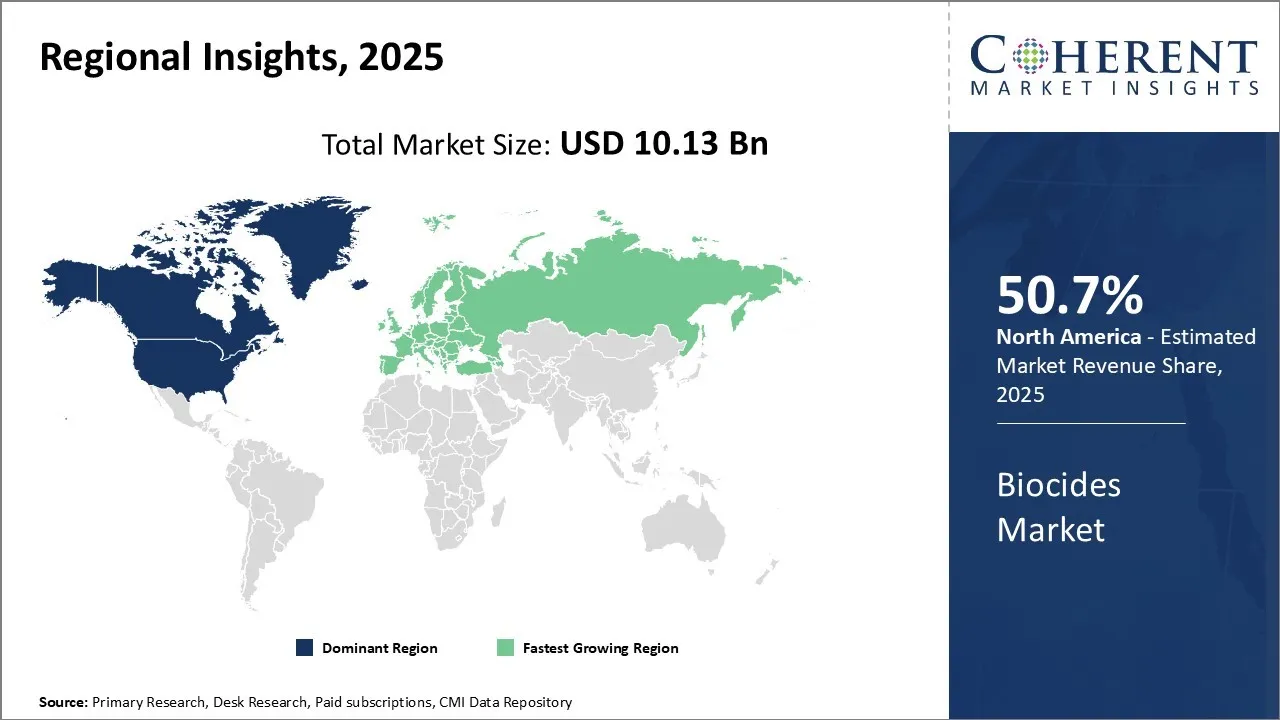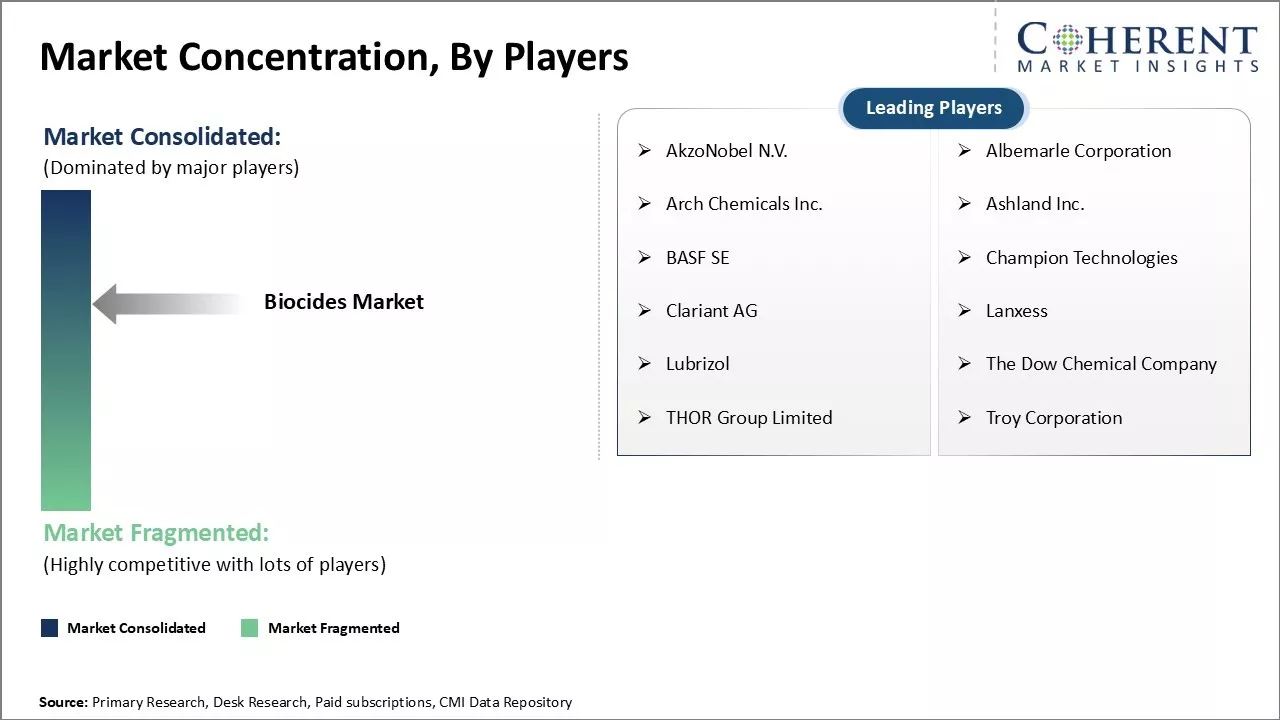The biocides market size will increase from USD 10.13 Bn in 2025 to USD 13.61 Bn by 2032, and expanding at a compound annual growth rate (CAGR) of 4.3% from 2025 to 2032.

To learn more about this report, Download Free Sample
Increasing demand for biocides from the water treatment industry will fuel demand. Biocides are used as disinfectants to kill harmful microorganisms in water facilities. Rapid industrialization and urbanization are putting pressure on water resources. These developments will lead to high investments in water treatment globally. Growing awareness about health hazards of microbial contaminants in water drives demand.
|
Current Event |
Description and its Impact |
|
Global Supply Chain Disruptions and Raw Material Shortages |
|
|
Technological Disruption and Innovation Pressures |
|
Uncover macros and micros vetted on 75+ parameters: Get instant access to report
Biocide use will grow in the coming years. Multinational companies are innovating to diversify products and reduce risks. People also prefer natural biocides more. Water treatment and wood preservation make the U.S. the leader in North America. U.S. water laws are strict and support EPA-registered biocides. Blue Plains Advanced WWTP is a major user of biocides. Wood use in buildings drives demand for biocides in preservation.
Halogen compounds segment will contribute 30.7% of shares in 2025, owing to its proven effectiveness. Halogen compounds represent the largest product segment in the biocides market. This is due to their proven effectiveness against a wide range of microorganisms.
For instance, in July 2024, Leap Industry unveiled a new product, called Pure Brom. 'Pure Brom – A No-Chlorine Bromine-Based Biocide.' It is a new generation of liquid stable bromine biocides developed and produced by Leap Industry.
Water treatment segment will contribute 40.8% of shares in 2025, owing to stringent regulations. This is driven by increasingly stringent regulations for potable water supplies and industrial wastewater discharge.
For instance, in April 2024, LANXESS expanded its offering of microbial control products for the oil and gas industry. They launched Aqucar® A 20, a water treatment microbiocide. It is designed for long-term preservation of oilfield reservoirs.

To learn more about this report, Download Free Sample
North America will account for 50.7% shares in 2025. This is attributed to strong environmental regulations and stringent norms about hygiene and public health. Major players such as BASF SE from the region have established strong distribution networks. They also benefit from industries such as crop protection, water treatment, and personal care.
For instance, in September 2023, Corteva launched its biocide Viatude™ in the U.S. This expanded its biocide portfolio in the country.
Europe exhibits the fastest growth owing to increasing agricultural production. People are now consuming more processed food and beverages. This led to growing concerns about water management, further propelling the biocides market demand.
For instance, in July 2025, Lonza launched a new Proxel preservatives in Europe. This was designed to address increasing market demand for Methylisothiazolinone- (MIT-) free biocide formulations.
Japan biocides market is characterized by presence of innovative product offerings. Rising adoption of combination biocide formulations for enhanced efficacy further drive growth. Companies such as Mitsubishi Chemical and Kuraray Co., Ltd, rely on their R&D expertise.
For instance, In October 2025, Mitsubishi Chemical Japan launched advanced biocides for industrial water treatment and coatings. This offers high efficacy and environmental safety. This launch strengthened its position in the domestic antimicrobial market.
China is poised to lead the global biocides market in 2025. China market is driven by the expansion of agrochemical, paints & coatings, and pharmaceutical industries. Local giants such as THOR and SinoHarvest focus on captive consumption as well as exports.
For instance, in September 2022, Dow Biocides Division unveiled BIOBAN™ ULTRA BIT biocide in China. This was a broad-spectrum biocide used to protect industrial water-based products.

To learn more about this report, Download Free Sample
Several biocides’ startups are bringing innovative technologies to market. Companies developing smart sensor solutions allow real-time biocide monitoring and optimization. Startups applying AI and predictive analytics help industrial customers maximize production.
| Report Coverage | Details | ||
|---|---|---|---|
| Base Year: | 2024 | Market Size in 2025: | USD 10.13 Bn |
| Historical Data for: | 2020 To 2024 | Forecast Period: | 2025 To 2032 |
| Forecast Period 2025 to 2032 CAGR: | 4.3% | 2032 Value Projection: | USD 13.61 Bn |
| Geographies covered: |
|
||
| Segments covered: |
|
||
| Companies covered: |
AkzoNobel N.V., Albemarle Corporation, Arch Chemicals Inc., Ashland Inc., BASF SE, Champion Technologies, Clariant AG, Lanxess, Lubrizol, The Dow Chemical Company, THOR Group Limited, and Troy Corporation |
||
| Growth Drivers: |
|
||
| Restraints & Challenges: |
|
||
Uncover macros and micros vetted on 75+ parameters: Get instant access to report
There has always been concern regarding the spread of various diseases especially in areas where people live in close proximity. However, in recent times this concern has risen sharply mainly due to occurrences of new diseases and emergence of drug-resistant strains of existing diseases.
Demand for sustainable and bio-based products is growing. This creates big opportunities in the biocides market. Regulations are getting stricter. Consumer preferences are also changing. Companies can develop new and greener biocide solutions.
Share
Share
About Author
Yash Doshi is a Senior Management Consultant. He has 12+ years of experience in conducting research and handling consulting projects across verticals in APAC, EMEA, and the Americas.
He brings strong acumen in helping chemical companies navigate complex challenges and identify growth opportunities. He has deep expertise across the chemicals value chain, including commodity, specialty and fine chemicals, plastics and polymers, and petrochemicals. Yash is a sought-after speaker at industry conferences and contributes to various publications on topics related commodity, specialty and fine chemicals, plastics and polymers, and petrochemicals.
Missing comfort of reading report in your local language? Find your preferred language :
Transform your Strategy with Exclusive Trending Reports :
Frequently Asked Questions
Joining thousands of companies around the world committed to making the Excellent Business Solutions.
View All Our Clients